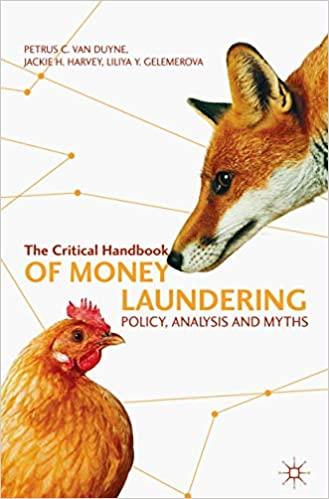Question
Need step by step on how to calculate standard deviation and confidence intervals . Recall the situation of Whaler Publishing Company from the previous chapter.
Need step by step on how to calculate standard deviation and confidence intervals.
Recall the situation of Whaler Publishing Company from the previous chapter. Whaler needed to develop confidence intervals of four exchange rates to derive confidence intervals for U.S. dollar cash flows to be received from four different countries. Each confidence interval was isolated on a particular country. Assume that Whaler would like to estimate the range of its aggregate dollar cash flows to be generated from other countries. The company will develop a spreadsheet to facilitate this exercise. Whaler plans to simulate the conversion of the expected currency cash flows to dollars, using each of the previous years as a possible scenario (recall that exchange rate data are provided in the original case in Chapter 9). Specifically, Whaler will determine the annual percentage change in the spot rate of each currency for a given year. Then it will apply that percentage to the respective existing spot rates to determine a possible spot rate in one year for each currency. Recall that today's spot rates are assumed to be as follows: Australian dollar = $0.7671 Canadian dollar =$0.8625 New Zealand dollar =$0.5985 British pound =1.9382 Once the spot rate is forecast for one year ahead for each currency, the U.S. dollar revenues received from each country can be forecast. For example, from 1 year to 2 year the Australian dollar declined by about 13.6 percent. If this percentage change occurs this year, the spot rate of the Australian dollar will decline from today's rate of $0.7671 to about $0.6629 in this case, the A$38 million to be received would convert $25,190,200. The same tasks must be done for the other three currencies as well to estimate the aggregate dollar cash flows under this scenario. This process can be repeated, using each of the previous years as a possible future scenario. There will be 15 possible scenarios, or 15 forecast of aggregate U.S. dollar cash flows. Each of these scenarios is expected to have an equal probability of occurring. By assuming that these cash flows are normally distributed, Whaler uses the standard deviation of the possible aggregate cash flow of all 15 scenarios to develop 98 percent and 95 percent confidence intervals surrounding the "expected value" of the aggregate level of U.S. dollar cash flows to be received in one year. a. Perform these tasks for Whaler to determine these confidence intervals on the aggregate level of U.S. dollar cash flows to be received. Whaler uses the methodology described here, rather than simply combining the results for individual countries (from the previous chapter) because exchange rate movements may be correlated. b. Review the annual percentage changes in the four exchange rates. Do they appear to be positively correlated? Estimate the correlation coefficient between exchange rate movements with either a calculator or a spreadsheet package. Based on this analysis, you can fill out the following correlation coefficient matrix. A$ C$ NZ$ A$ 1.00 C$ 1.00 NZ$ 1.00 1.00 c. Would the aggregate dollar cash flows to be received by Whaler in this case be riskier than if the exchange rate movements were completely independent? Explain. d. One Whaler executive has suggested that a more efficient way of deriving the confidence intervals would be to use the exchange rates instead of the percentage changes as the scenarios, and to derive U.S. dollar cash flow estimates directly from them. Do you think this method would be as accurate as the method now used by Whaler? Explain.
Step by Step Solution
There are 3 Steps involved in it
Step: 1

Get Instant Access to Expert-Tailored Solutions
See step-by-step solutions with expert insights and AI powered tools for academic success
Step: 2

Step: 3

Ace Your Homework with AI
Get the answers you need in no time with our AI-driven, step-by-step assistance
Get Started


